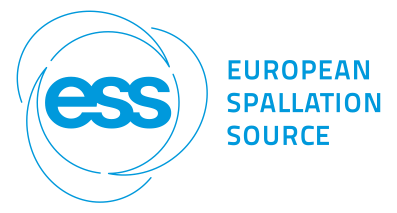Speaker
Ms
Elpida Iliopoulou
(CERN)
Description
Authors: P. Bamidis$^{1}$, M. Brugger$^{2}$, R. Froeschl$^{2}$, **E. Iliopoulou**$^{1,2}$, A. Infantino$^{2}$, T. Kajimoto$^{3}$, N. Nakao$^{4}$, S. Roesler$^{2}$, T. Sanami$^{5}$, A. Siountas$^{1}$, H. Yashima$^{6}$
$^{1}$ Medical Physics Laboratory, School of Medicine, Aristotle University of Thessaloniki, Greece,
$^{2}$ CERN,$^{3}$ Hiroshima University, $^{4}$ Shimizu Corporation,$^{5}$ KEK, $^{6}$ Kyoto University
The CERN High energy AcceleRator Mixed field (CHARM) facility is situated in the CERN Proton Synchrotron (PS) East Experimental Area. The facility receives a pulsed proton beam from the CERN PS with a beam momentum of 24 GeV/c with 5E11 protons per pulse with a pulse length of 350 ms and with a maximum average beam intensity of 6.6E10 protons per second. The extracted proton beam impacts on a cylindrical copper target.
The shielding of the CHARM facility includes the CERN Shielding Benchmark Facility (CSBF) situated laterally above the target that allows deep shielding penetration benchmark studies of various shielding materials. This facility has been significantly upgraded during the extended technical stop at the beginning of 2016. It consists now of 40 cm of cast iron shielding, a 200cm long removable concrete block with 3 inserts for activation samples, a material test location that is used for the measurement of the attenuation length for different shielding materials as well as for sample activation at different thicknesses of the shielding materials.
Activation samples of bismuth, aluminium and indium were placed in the CSBF in September 2016 to characterize the upgraded version of the CSBF. Monte Carlo simulations with the FLUKA code have been performed to estimate the specific production yields of bismuth isotopes ($^{206}$Bi, $^{205}$Bi, $^{204}$Bi, $^{203}$Bi, $^{202}$Bi, $^{201}$Bi) from $^{209}$Bi,$^{24}$Na from $^{27}$Al and $^{115m}$I from $^{115}$I for these samples.
The production yields estimated by FLUKA Monte Carlo simulations are compared to the production yields obtained from $\gamma$-spectroscopy measurements of the samples taking the beam intensity profile into account. The agreement between FLUKA predictions and $\gamma$-spectroscopy measurements for the production yields is at a level of a factor of 2.
Author
Ms
Elpida Iliopoulou
(CERN)
Co-authors
Anastasios Siountas
(Medical Physics Laboratory, School of Medicine, Aristotle University of Thessaloniki, Greece)
Angelo Infantino
(CERN)
H. Yashima
(Kyoto University)
Markus Brugger
(CERN)
Noriaki Nakao
(Shimizu Corporation)
Panagiotis Bamidis
(Medical Physics Laboratory, School of Medicine, Aristotle Univeristy of Thessaloniki, Greece)
Dr
Robert Froeschl
(CERN)
Stefan Roesler
(CERN)
Toshiya Sanami
(KEK)
Tsuyoshi Kajimoto
(Hiroshima University)
